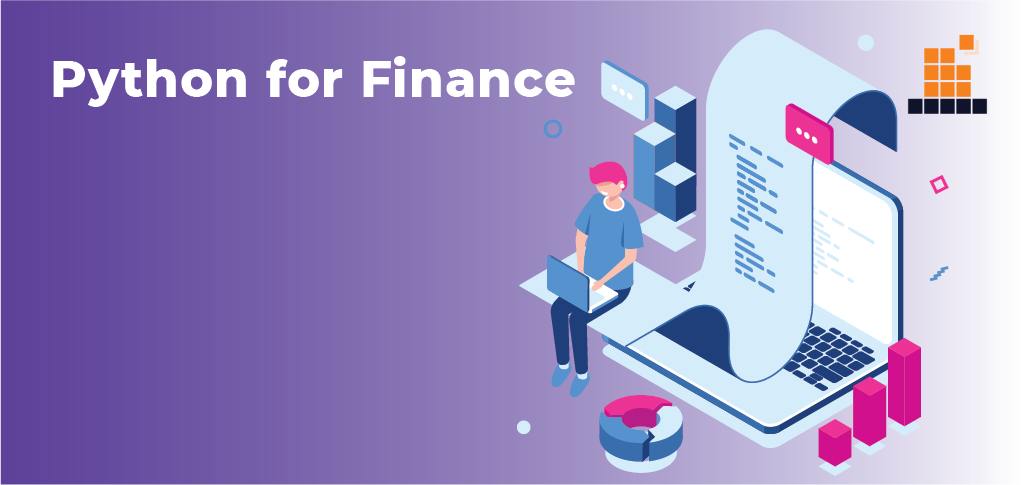Technology has become a blessing in finance. Many financial institutions are now evolving into technology companies rather than just staying engaged with the financial aspect. Technology speeds up innovation and helps to gain a competitive advantage. It has become the major helper in finance. Its because the attention for technology by financial institutions has increased a lot in recent years. Among the popular programming languages for finance, you will find Python and R as the most popular ones alongside the languages like Java C# and C++.
Python has gained popularity over the years as the language for Finance and Fintech companies. It is commonly used in applications that range from cryptocurrencies to risk management. Python proves to be an excellent tool for traders, researchers, and analysts because of its simplicity and robust modeling. Moreover, even companies like Stripe and Zopa use it.
Why Python?
There are a lot of features that python has made it the perfect choice for finance and fintech. Some of them are as follows:
Simple and flexible:
To begin with, this language is super easy to write and deploy that makes it a perfect programming language for handling financial services application; the applications that are complex most of the times. It has a simple syntax and it greatly boosts the development speed that helps the organizations to build the software quickly that they need or bring new products to the market. Besides, it reduces the error rate while developing products for finance industries.
Allows building MVP quickly:
There is a great need for the financial sector to be more agile and responsive to their customer demands. That’s why they need a technology that is both scalable and flexible. This is what python offers. In order to create a solid MVP, using python with frameworks such as Django will help a lot. After that, businesses can change the code or add new ones very easily to create the perfect product.
Bridges economics and data science:
Among economists, languages such as R and Matlab are less popular as they use Python for all their calculations. It is one reason why Python rules the finance industry because of its simplicity and practicality in generating algorithms as well as formulas. It is easy to integrate their work into python-based platforms. Several tools like NumPy and scipy allows them to perform calculations and display the results in a very sophisticated manner.
A rich ecosystem of tools and libraries:
Python can be a great help to developers as they don’t need to create everything from scratch. This saves a lot of time and money for everyone. Besides, financial applications need to integrate with third-parties. Python libraries make it easier too. It has a great development speed along with an enhanced collection of tools and libraries that gives a competitive advantage to the organizations whose goal is to address the changing customer demands and needs by creating products quickly.
Popular:
Python is a programming language that has a passionate community of developers who contribute to open-source projects, organize events to share information about python’s best practices, and build practical tools. If we talk about open-source projects, every python framework has an open-source community that helps with the development process. It is gaining more popularity year after year. The organizations and businesses that create solutions made with python can be sure that their technology is ultimately stable. It is not going to become outdated anytime soon.
Uses of Python in finance
Python is useful in a lot of applications. In this section, you will get to know the most famous uses of this language in the financial industry.
- Analytics Tools: Quantitative finance gives solutions to that process and analyzes big financial data and large datasets. Several libraries such as Pandas simplify the data visualization process and allow carrying out statistical calculations. Because of its amazing libraries, every python based solution is equipped with a strong machine learning algorithm. It allows predictive analytics which is very essential to all the financial services providers.
- Banking Software: Finance organizations use python for building online banking platforms and payment solutions as well. For example, Venmo is an excellent mobile banking platform. All credit goes to the simplicity and flexibility that python offers.
- Cryptocurrency: The businesses that sell cryptocurrency require certain tools for carrying out its market analysis to get predictions and insights about it. Anaconda is a python ecosystem that helps the developers to retrieve the cryptocurrency pricing and create visualizations. This is the reason why web applications that have to deal with cryptocurrency analysis take advantage of python.
- Building trading strategy: There is a huge amount of data that stock markets create. To analyze it, developers use python to create such solutions that identify helpful trading strategies. They also provide predictive insights into the conditions of markets.
Conclusion
Python is a perfect technological framework for financial organizations, both as a language and as an ecosystem. It provides a lot of benefits to the developers such as efficient development approaches, elegant syntax, usability for production and prototyping, and others. With such a huge amount of tools and libraries that Python provides, it gives answers to almost every question that a developer or a financial industry has regarding data volumes, compliance, regulation, analytics, or technology itself. Python has a great potential to provide a single, consistent, and powerful framework to streamline production efforts and end-to-end development even across large financial organizations.
The uses of python are not limited. It can be useful for iterative prototyping, algorithmic trading programs, interactive financial analysis, application code for valuation models, and a lot more. At the end of the day, the best feature that python has is that it is really fun to work with. If you are into problem-solving, building things, making efficient workflows, etc then it is a language you must try.
